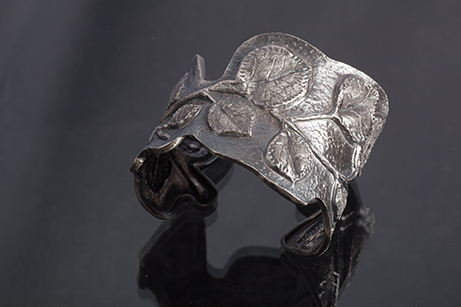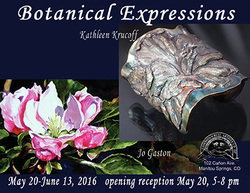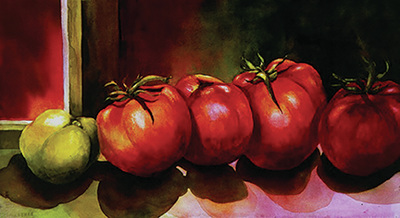|
0 Comments
 Virginia Peach Blossom Virginia Peach Blossom by Juanita Canzoneri Jo Gaston grew up on a farm in southwest Missouri. Grandparents on both her mother's and father's side lived on farms nearby. Some of her earliest memories are of vegetable and flower gardens and of the livestock. Jo creates watercolors of the ranch and garden subjects she has known since childhood. The realistic details of her paintings make her subjects easily recognizable as she uses light and color freely to intensify her impressions of the inherent abstract forms. Attractive forms, textures, and colors are present and waiting to be recognized in many of her subjects especially in vegetables, flowers and Western tack. Although, she admits she finds that turning them into art is hard work. She has to choose thoughtfully, stand close, observe carefully, and work within the fundamentals of artistic composition. The intricate shapes and glowing colors of vegetables and flowers appeal to her. She uses saturated, vibrant pigments to dramatize their form and texture. She finds an endless variety of form, texture, and light and color in vegetables and flowers. From warm, rich browns to bright, whimsical pinks, purples, and blues, her palette grows with each painting. Form, texture, light, and color are there waiting in most of her subjects, but composition and value are the most important elements in her work. She combines and positions her subjects to achieve the strongest visual effect. Her goal is always a composition that intrigues and rewards the viewer, and dramatizes the features that originally interested her to the subject. For the pieces in “Botanical Expressions” Jo begins a painting by selecting a subject with strong, interesting design elements. Prominent colors and light levels also direct her choices. The hibiscus blossom that is a subject of Kathleen’s jewelry and her watercolor painting attracted her with exactly those desirable design elements: colors, and light levels. Having chosen a subject, she does several drawings until she has an outline that reads well, one with a clear center of interest and a combination of shapes and lines that will guide a viewer into, and out of, the eventual painting. Then she adds shading to help with decisions about the direction and intensity of light and shadow. These decisions about values are critical because with transparent watercolor one cannot go back to lighten something that’s too dark. When she’s sure of basic shapes and light levels, she does a color study by blocking in principal colors. Those blocks of color tell her for the first time whether the light, color, and shape will come together well. Going from the color study to the final painting takes hours of attention to shading, texture, and detail—using multiple layers of transparent watercolor to get the right balance of darkness and light, adding intricate details to emphasize texture and bring out important features. That sounds like a lot of work for a single hibiscus blossom, doesn’t it? Kathleen and I agree that what we create does take plenty of effort and time, but somehow work doesn’t seem the right term for what we do. We take delight in the creating of our jewelry and paintings, and we very much hope you’ll enjoy seeing the results. |
Juanita Canzoneri
|









 RSS Feed
RSS Feed